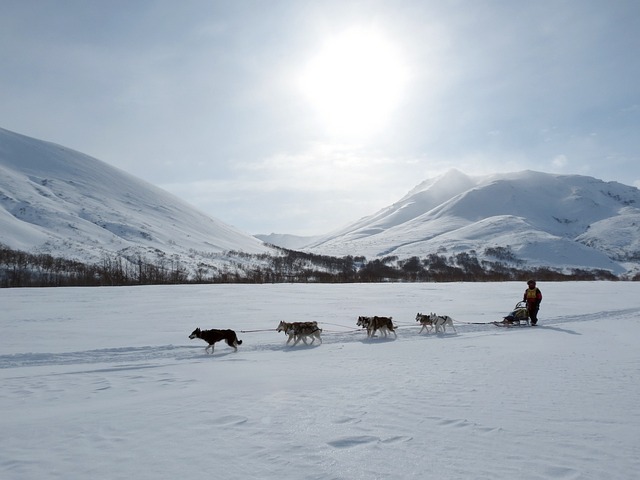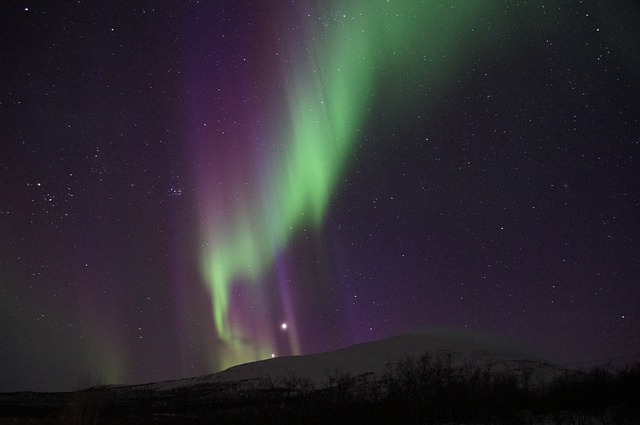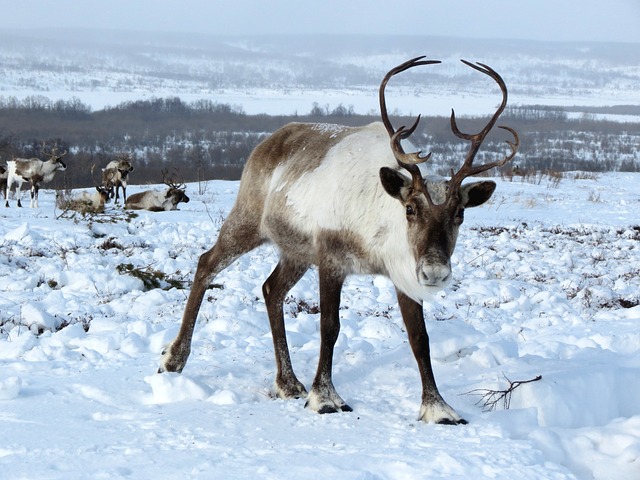Exploring Abisko National Park: A Winter Wonderland in Swedish Lapland
Abisko National Park, located in the far north of Sweden, is a place of raw beauty and Nordic wilderness. Surrounded by majestic mountains, frozen lakes, and expansive forests, this protected area is one of Sweden’s oldest national parks. It’s a dream destination for nature lovers, adventure seekers, and anyone hoping to experience a truly Arctic landscape. Here, the snow-covered trails, crystal-clear skies, and untouched natural habitats make it an essential stop in Swedish Lapland.
In this post, we’ll explore Abisko’s unique natural features, seasonal highlights, wildlife, and what makes this park a truly special destination for visitors year-round.

Dog Sledding: An Age-Old Mode of Arctic Exploration
Dog sledding is one of the most immersive ways to experience the vast, snow-covered landscapes of Abisko National Park. While sledding through the Arctic wilderness, visitors are transported back in time, connecting with the landscapes in the same way that indigenous communities and early explorers once did. Abisko’s open terrain and established trails make it a fantastic location for this activity, whether you’re viewing distant mountain peaks or gliding along frozen rivers.
A dog sledding experience in Abisko is an opportunity to witness nature’s beauty up close: the quiet of the forest in winter, the distant calls of Arctic birds, and the soft crunch of snow under the sled. Unlike more populated parks, Abisko has a secluded feel that makes each sled ride feel like a journey into an untouched world.

Northern Lights: A Natural Phenomenon in Abisko’s Clear Skies
Known for its unusually clear skies, Abisko is one of the top places on the planet to see the northern lights, or aurora borealis. The park sits under what’s known as the “Blue Hole,” a meteorological anomaly where clouds often part, offering clear views of the sky. This phenomenon, combined with Abisko’s high latitude, allows for frequent and vibrant aurora displays.
The northern lights are most visible between September and early April, with peak viewing during the darkest months of December through February. Visitors can simply look up from almost anywhere within the park’s borders and, with a bit of patience, catch the glowing lights painting the sky in hues of green, pink, and purple. While other locations might suffer from light pollution, Abisko’s remote setting allows the auroras to shine in all their natural glory.

The Unique Geography of Abisko
Abisko National Park spans 77 square kilometers and is set within a strikingly varied landscape. One of its main natural features is Lake Torneträsk, the sixth-largest lake in Sweden. In winter, the lake freezes over, creating an expanse of ice framed by the surrounding mountains. Hikers and adventurers can walk on this frozen surface or cross-country ski across its icy plains.
Another iconic feature is Mount Nuolja, which rises above the park and offers expansive views of the entire Abisko area. In winter, the mountain is coated in snow and becomes a popular destination for seasoned hikers and photographers seeking panoramic vistas. The views from Nuolja showcase the untouched beauty of this northern region, from frozen valleys and rugged cliffs to snow-laden forests.
Seasonal Highlights: Summer Midnight Sun and Winter Polar Nights
Abisko’s extreme latitude means it experiences some of the most distinct seasonal changes on the planet. During winter, polar nights cast a mystical twilight over the landscape, with the sun never fully rising above the horizon for several weeks. The resulting light has a soft, diffused quality that casts an ethereal glow over the snow, lending a sense of quiet stillness to the park.
In contrast, summer in Abisko is a time of the midnight sun, when daylight stretches into 24 hours, and the landscape bursts into color as wildflowers bloom and alpine meadows thrive. Though many know Abisko for its winter beauty, summer is also magical, drawing hikers and botanists eager to explore its flora and fauna during the endless daylight hours.

Wildlife and Ecosystems of Abisko National Park
Abisko’s rich ecosystems are home to a surprising diversity of Arctic flora and fauna. In winter, it’s common to see reindeer roaming through the park, their thick coats adapted to withstand the freezing temperatures. The elusive moosecan occasionally be spotted as well, particularly around Lake Torneträsk, where they forage for food. Arctic foxes, although rare, are also residents of Abisko and are known for their fluffy white winter coats.
Birdwatchers are drawn to Abisko to observe species that thrive in Arctic climates, such as the Siberian jay, ptarmigan, and even the impressive golden eagle. In summer, the park’s wildflowers bloom across the tundra and meadows, attracting pollinators and brightening the rugged landscape with splashes of color. Each season highlights different facets of Abisko’s unique Arctic ecosystem, from winter’s stark beauty to summer’s abundance of life.
Trails and Adventures in Abisko’s Wilderness
Abisko National Park offers well-marked trails suitable for all levels of experience, whether you’re an avid hiker or prefer a scenic walk. The Kungsleden Trail, a famous long-distance hiking route in Sweden, begins in Abisko and leads southward into the Swedish wilderness, making it popular among those looking for a multi-day trek.
In winter, trails within the park transform into pathways for snowshoeing and cross-country skiing, allowing visitors to explore the snow-covered forests, mountains, and lake surfaces. Many trails offer beautiful vistas of Lake Torneträsk and the surrounding mountains, creating ample opportunities for photography and quiet reflection.
Preserving Abisko’s Pristine Beauty
As a protected national park, Abisko plays a crucial role in preserving Sweden’s natural heritage and delicate Arctic ecosystems. Visitors are encouraged to respect the “leave no trace” principles, ensuring that this landscape remains as pristine and undisturbed as possible. The park’s rangers and staff work year-round to maintain trails, monitor wildlife, and ensure that Abisko remains a place of beauty and tranquility for future generations.
Plan Your Visit to Abisko National Park
Whether you’re visiting in winter to experience the polar nights and northern lights or in summer to enjoy the midnight sun, Abisko National Park offers a profound connection to nature. It’s a place where Arctic landscapes, fascinating ecosystems, and seasonal extremes come together to create a destination like no other. So pack your winter gear, charge your camera, and get ready to explore one of Sweden’s most breathtaking national parks.
